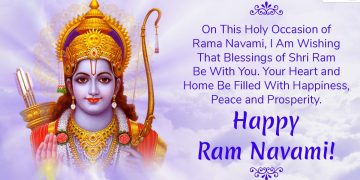Jo sat baar paath kar koi
Chhutehi bandhi maha sukh hoi
He who reads this (Hanuman Chaalisa) one hundred times, becomes free from bondage and enjoys great happiness.
Jo yah padhe Hanuman Chaalisa
Hoy siddhi saakhi Gaurisaa
Whosoever reads these forty verses dedicated to Sri Hanuman, is sure to gain accomplishment (Siddhi). Lord Shiva stands witness to this utterance.
There are three types of chanting prescribed for specific purposes.
1. Akhanda Mandala – nonstop chanting during a ratri vrat (nightly vigil).
2. Intermittent – performed regularly, example, daily, weekly, monthly, yearly.
3. Occasionally or situationally – performed wherever there is some distress.
Tulsidasa uses the word Paath. This is a very specific ritual prescribed for reading an empowering mantra, text. We know of Gita Paath, Chhandi Paath and others.
Paath is undertaken as a ritualistic reading. And usually done during a ratri vrat. It can assume any of the three types of chanting. Tulsidasa has left the prescription open ended. But said one hundred reading (sat baar paath).
In his next verse, instead of paath, he uses padhe. This means read. It has no ritualistic connotations.
Our question of how to read the Hanuman Chaalisa to attain the fulfilment it promises is truly materialistic and short sighted.
Everything in this phenomenal world will perish and be valueless beyond the funeral pyre. Tulsidas promises from reading Hanuman Chaalisa, we will be free from bondage, and enjoy great happiness, and attain siddhi (accomplishments). But we engage in reading the text to attain more material entanglements, and thereby slip deeper into more misery.
The Brahmastra of Hanuman Chaalisa, instead of becoming a catalyst to break free from the material realm, we use the very Brahmastra to destroy our potential for moksha. We seek financial success, relief from temporal sickness, and trivialities.
Instead of striving to be of service to Sri Rama, as Hanuman, we are using Hanuman as a barter chip to bargain our desires with Bhagavan. We seek fulfilment of our wants and ambitions by sanctimonious singing of the sacred text of Hanuman Chaalisa. There is not even the proper protocol for the paath – ceremonial and ritualistic reading. We simply and lazily just begin to sing the sacred stanzas. We beseech Hanuman to grant our desires. He becomes our Kamdhenu – wish fulfilling cow.
The humility and guileless service of Hanuman is forgotten and skewed for our material intentions. We want to replace Shri Rama, and have Hanuman serve us in lieu.
We read in the text that Hanuman will grant this and that favour to all and any who chant his name. And so, we busily make a rushing endeavour to finish the prescribed reading of one hundred. In fact, we have made a selection of certain verses and repeat those. As that is the particular malady for which we seek recourse. Forty verses are a chore and in our busy lives, we cannot devote ten minutes to recite the entire Hanuman Chaalisa. So, we meticulously choose the verses that correspond to our desire and ramble through that in less than a minute prayer. The central purpose of our existence becomes a tangential petition for granting favours.
By Samaroo Avatar





































































